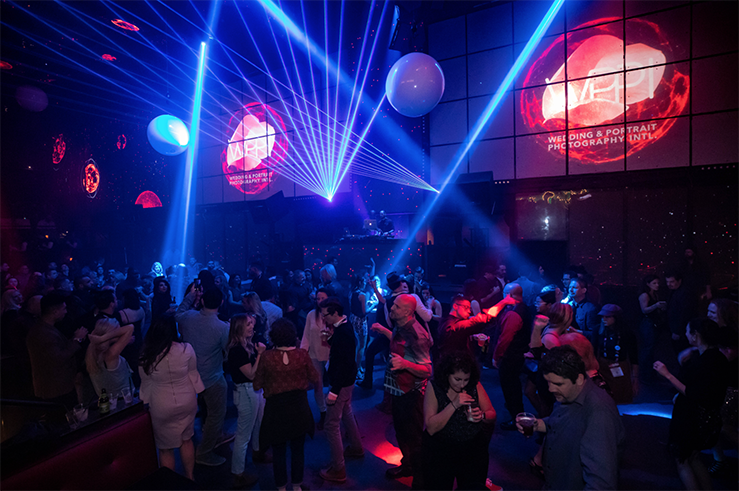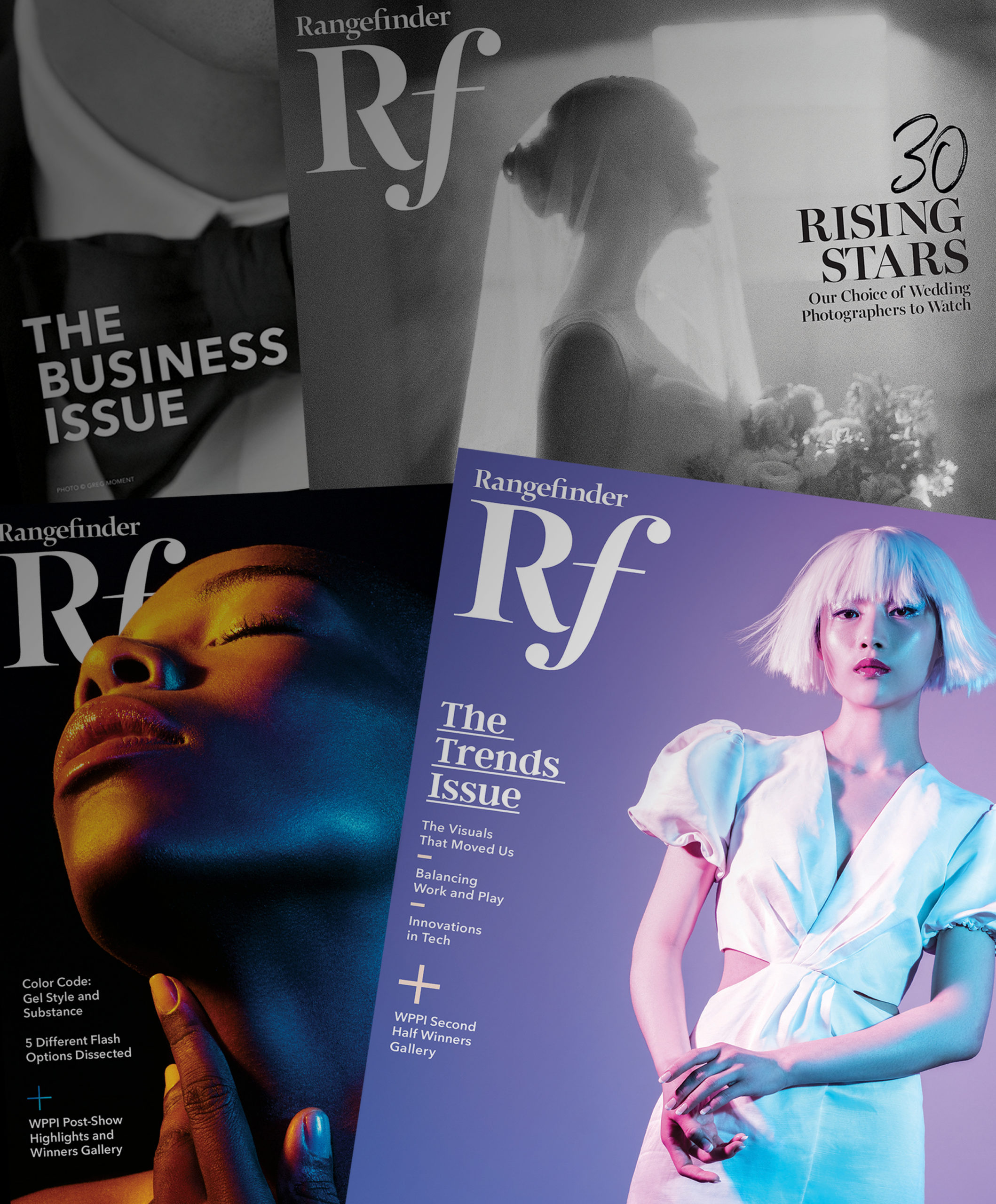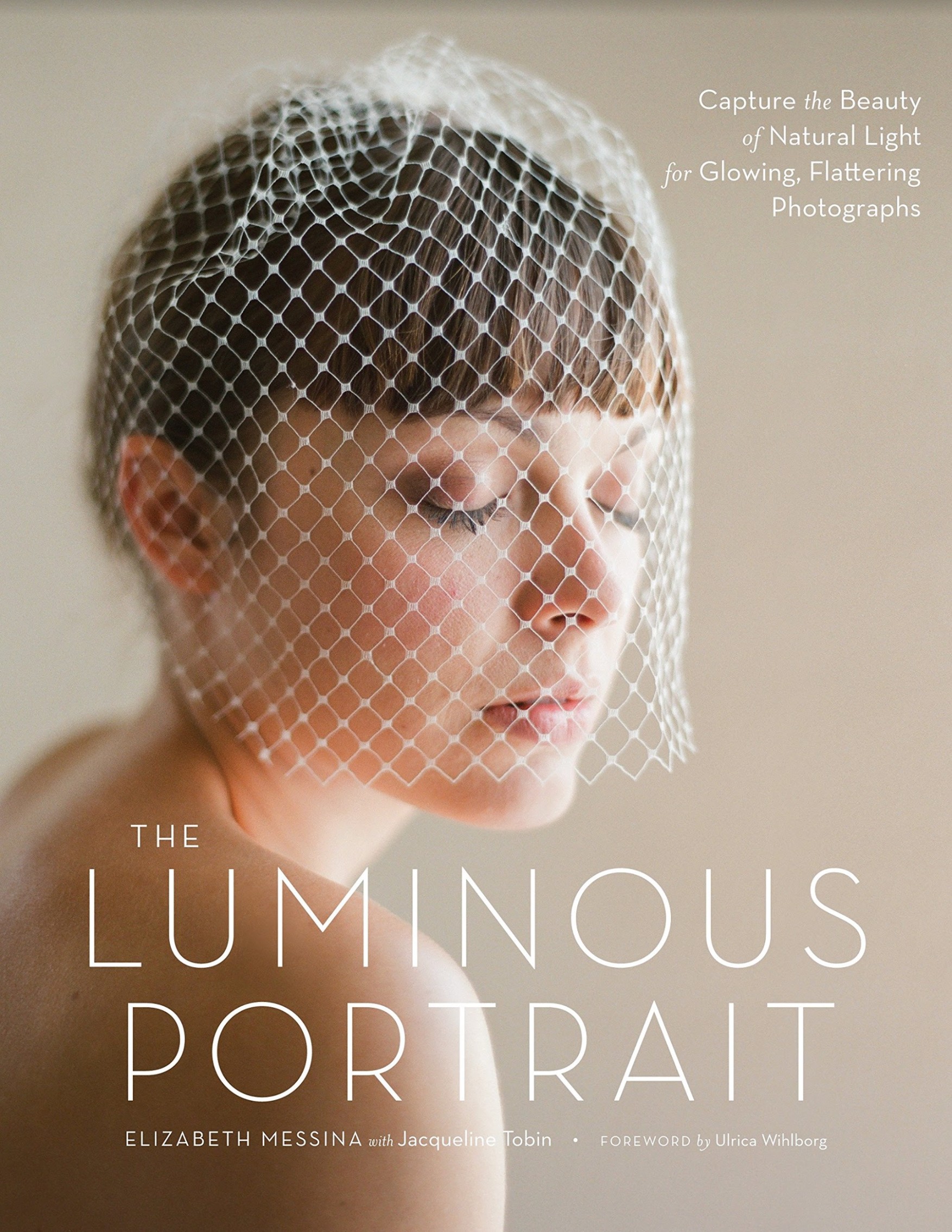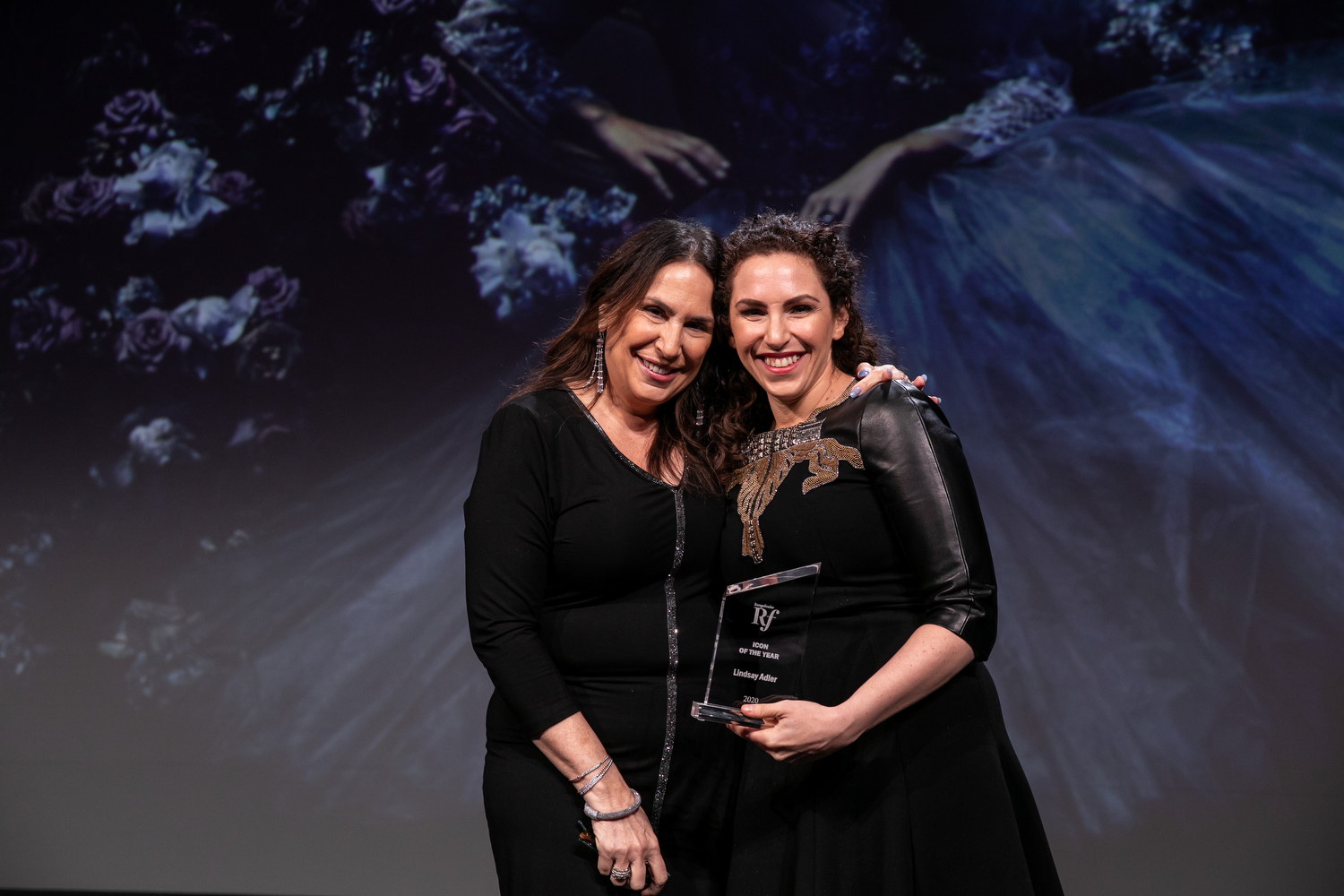

Rangefinder has always been a go-to resource for many professional photographers, but what sets them apart from other content-driven platforms is their commitment to their community. When we asked Jacqueline Tobin to elaborate on that, she said, “We are a community. We built a community over time, and people trust us and our insight. We might follow trends, but we’re also trying to get people to build their own signature voice.” From taking the brand from print to digital delivery to pivoting (with the industry) to focus not just on wedding photography but also on portrait photography, the past few years have brought big changes at Rangefinder. Jacqueline and her editorial team have ensured that the magazine continues to be relevant by adapting to the changing landscape in the photography industry while also catering to a wider audience. She shared, “The industry was changing for photographers, and we had to accordingly change with them.”
Initially launched as a magazine in the 1950s, Rangefinder is now a digital resource platform for photographers by photographers. From ‘how-to’ articles that can help photographers better their techniques to inspirational stories about photographers doing exceptional work, the platform now serves to motivate and educate anyone interested in the art of photography. The new digital magazine is also closely associated with the Wedding & Portrait Photographers International (WPPI) Conference, an event that annually brings together portrait and wedding photographers and videographers for continuing education and networking.
With a vision that is tailored to adapt to the future, a strong community that doesn’t hold back when it comes to sharing and helping, and the aim to empower and inspire photographers, the digital resource platform that is Rangefinder is clearly more than just another online resource for photographers. It’s a thriving community that is here to stay in the photography sphere.
Suggested Read: ShootDotEdit Customer Reviews: True Testimonials

ShootDotEdit: Let’s start with a little backstory about you, Jacqueline. How did you get into the photography space and then Rangefinder? Tell us about your journey.
Jacqueline: I started out in this industry in 1986 when I answered a classified ad for Photo District News (PDN), which was actually the sister publication of Rangefinder. So that’s what really launched me into the photography world. I had been an amateur photographer growing up. I grew up in a dark room, pretty much in my father’s basement. I was a photographer for my college newspaper back then. So I always loved photography. PDN got me more immersed in the pro photography world and in commercial and still life and photojournalism and all of that. I met almost every living legend that ever was at the time, interviewing people like Gordon Parks and Elliott Erwitt, Bruce Davidson, and Arnold Newman.
I was there for 25 years, and then I moved over to Rangefinder. I had just written a couple of books on wedding photography, and my boss at the time suggested that I make a move. That was in 2011 or 2012. Rangefinder actually came to be in the 1950s, and it really did encompass and cover all types of photography. And then we switched focus to cover more wedding photography and got immersed in the WPPI world – since that’s very connected with Rangefinder. But back in the PDN days, it was taboo to even say that you were a wedding photographer. And so, I feel that we really helped the industry move away from that taboo and allowed the public to appreciate wedding photographers and all it encompasses.
In 2015, we rebranded Rangefinder with a new logo with just the initials “RF”. Today we’re solely online – the magazine stopped printing around January 2020.
ShootDotEdit: Which brings us to our next question, what was the reason for fully going digital?
Jacqueline: There were a lot of different things, and in retrospect, I think it was actually a great decision, even though I was very heartbroken at the time. It was a good decision because a couple of months after the decision was made, the pandemic hit. In terms of being a print magazine, we always did pride ourselves on managing to still do well and still get advertisers. But at a certain point, print advertising declined. And I think a lot of magazines really suffered in the last couple of years because of that. And so we had to change our whole focus on how we do advertising. Now it’s more about sponsorships and packages.
So, we seamlessly transitioned from print to online. We had a website before, but then we really put all our efforts into the website after the print magazine to have all the original content to post daily and weekly. And so, we like to just say that the packaging it comes in doesn’t matter. Rangefinder is still there. We’re still there for the industry.
Suggested Read: Digital Advertising For Wedding Photography – Is It Worth It?
ShootDotEdit: And we are happy to hear it for sure! We definitely feel like you’re a needed resource for portrait and wedding photographers! So, tell us about the shift from wedding focus to portrait or mixed focus. How did that happen?
Jacqueline: In 2020, with the global pandemic, wedding photography was pretty decimated for a while. There were so many photographers who lost all their bookings and were just never able to come back, but then we also saw this succession of people pivoting their brands or expanding. And so, while they were just purely wedding photographers before, now, they were doing things like family and maternity photos. Even though that always was a thing, it just seemed like wedding photographers started doing more types of photography. And so, instead of shuttering altogether, wedding and portrait photographers were now pivoting and being more creative.
At Rangefinder, we featured a lot of articles on photographers pivoting – people who would reach out to local restaurants and try to do advertising work for them or photograph their menu items. Photographers really started to think on their feet and just got out there and connected with people, connected with their clients, or tried to market albums or other services to their past clients. And so, that was part of the reasoning for shifting our focus. We had to cover what was happening to the industry and be in alignment with that. So the industry was changing, wedding photographers were changing, and we had to change accordingly.
ShootDotEdit: That makes a lot of sense. And then now, of course, post-pandemic, if you want to call it that, what do you feel like is the future of Rangefinder? To stay with this sort of blended sphere or change to something else?
Jacqueline: We are still here, and we will be here and stay with this more blended sphere. Even though there are tons of brands out there, I think we are a household brand name. As a brand, we are more than just about putting out articles every day. We are a community. We built a community over time, and people trust us and our insight. We might follow trends, but we’re also trying to get people to build their own signature voice.

We’re also more in alignment than ever with WPPI. And Arlene Evans, who is the Content Director at WPPI and Rangefinder, has also been tasked with pivoting that show and bringing in more portraiture and more new speakers. They’ve just announced the class line-up recently, but many of these speakers are new this year and incorporate much more of an expanded base of different types of photography because, within portraiture, there’s so much – there are high school seniors and maternity and family and birth photography and glamour and fashion and beauty… and so much more. So it’s our job also to make people realize that the word “portrait” is just such an all-encompassing word. We’re trying to break down the sub-genres within it, and that’s reflected in the show as well as the articles in Rangefinder.
ShootDotEdit: So, how do you find your material? What is trending now? How do you find your Rising Stars of wedding photography?
Jacqueline: That’s a good question that I also ask myself! Libby Peterson, the Senior Editor, and I are on the editorial side, and we work with Arlene at times to bridge the gap between who she has as speakers and the topics we’re covering. We do a lot of audience listening where we go on all the social channels. Libby and I are constantly talking to photographers in the field. It’s a good system because she has the younger demographic, and I have the older demographic, so we get to hit everybody that way.
Also, Libby spearheads Rangerfinder’s 30 Rising Stars in wedding photography, and we’re just starting to gain momentum on that again in terms of getting nominations for the 2021 list. We actually nominate people, or we have other industry leaders and influencers nominate people for the list.
I also get a lot of story ideas from SEO tools, and this thing called SEMrush, where it helps us identify keywords and really hone in on the articles that we know people are looking for. So that’s a big part of it as well. We want it to partly touch on what people in the industry want and also what the audience wants through these keywords. We have so much information and have to edit it down and know what is going to resonate.
Related Read: Behind The Scenes With Rangefinder: Secrets To Becoming One Of The 30 Rising Stars
ShootDotEdit: Definitely. One of the things that makes you guys different is that you are more than just an information resource for photographers. You also highlight people’s stories. It’s not just how-to tutorials. It’s the people behind these things as well.
Jacqueline: That is a huge part of it.
ShootDotEdit: Would you say your audience is more leaning towards the younger photographer or one who has been in business 1-5 years? Is that who you see coming to the site and coming to WPPI more than the seasoned photographer?
Jacqueline: I think we have a mix of both. We’ll see one social media platform draw a mix of 25 to 34-year-olds, whereas another draws interaction from a group older than that. The WPPI conference appeals to people in all stages of photography – from the beginner to the veteran, but we are seeing a younger audience the last few years. For Rangefinder, I think the print version of the magazine definitely had a 40-50-year-old and up male audience for awhile, but that’s really changed a lot. And so I think we reach, now, both male and female and just skewing a little younger, around 25 to 40.

ShootDotEdit: Right. So earlier, you had to be a member of WPPI to get Rangefinder for free, or you could purchase the subscription. But is the online version free, or do you also have to have a subscription for it?
Jacqueline: The online version is free, and there’s a subscription for the newsletter, which is free, which comes out weekly, and it’s a Rangefinder and WPPI combined newsletter. If you go to our website, you’ll get a pop-up asking you to put in your email before you can read the whole article. That’s free too.
ShootDotEdit: So, how do you figure out your readership? How do you measure how many people are coming and where they are coming from?
Jacqueline: We have a marketing department that deals with all that using Active Campaign, Google analytics, and other such tools. That’s one huge difference between a magazine and a website. We are measuring the data now. And so it’s becoming a data-driven content platform where the magazine wasn’t necessarily that. And that’s been a huge help as well to figure out who wants to read what, and not just blindly post stories that we think somebody is interested in.
ShootDotEdit: So, what do you want your reader to walk away with after they view or engage or read what you share on Rangefinder?
Jacqueline: We always talk about reader takeaway in our editorial meetings. We have to be really focused on not just blindly posting things that nobody cares about, things that aren’t helping anybody. So there are call-to-action pieces or how-to pieces, where at the end of it, you’re going to walk away with a skill or the inspiration to try something that maybe you didn’t want to try before. And so, whether it’s stories on creative inspiration or equipment pieces, or features or how-tos, we just want people to feel inspired. We want them to try something new or piggyback on an idea from an article, or start their own personal project, or to go out and get hired by a specific type of client. So everything’s based around feeling inspired and creative.
ShootDotEdit: How do you feel like the photographer benefits from Rangefinder?
Jacqueline: I think it goes back to that community feeling. We make them feel like they’re part of something, part of a thriving community that wants to help each other and share. When I was at PDN, the talent there was very established, but a lot of them were also world-renowned photographers. They would teach, they would write books, but they were still kind of unapproachable. I hate to use the word superstar, but even these influencer types of photographers are just regular people. They’re so approachable. Jerry Ghionis, Roberto Valenzuela, and people like that. You could just be getting out of art school and go and knock on Roberto’s door, and he’s willing to teach and talk to you. For example, Roberto recently wrote a piece for us about the time he mentored Lana Polic, a woman who lives in Croatia, and she is doing self-portraits to help teach herself photo skills. He saw some of the images and was blown away and wanted to mentor her through a Canon program. I thought that was phenomenal. He just gushes about her. He’s so inspired by her, which is like a nice reversal, right? That the mentor is inspired by the mentee or the student.

ShootDotEdit: We are getting this vibe that it’s all about inspiration, to get inspired at any stage, at any age in your photography career. And share very human stories where say, the mentor can be inspired by the mentee! Essentially that you are never too old to grow and to learn.
Jacqueline: Yeah, and inspiration doesn’t just mean that “Oh, wow. I think that’s cool” type of feeling. We do how-to and equipment pieces too. We used to have how-to issues all the time and pieces on pricing and marketing, and branding. There’s so much to being a photographer that goes beyond just taking great images. We’re really big on that business aspect. Always have been. So I think that’s part of what we offer as well. We might not offer as much technique as other brands, but we have tons of business stories, which is something that a lot of photographers who come out of school might not know. For example, the process of how to fuse skill and technique with the business side or how to price their photography.
ShootDotEdit: That is a needed resource for sure. In the industry, pricing, business building, marketing, all the things that you have to do that you don’t sign up to do when you become a photographer and then quickly realize you have to do or hire somebody else to do. What can you tell us about where you see the photography industry now and where do you see it headed? What is your prediction?
Jacqueline: My first prediction or just my assessment is that photography is not dead. And wedding photography is not dead. I think there are a lot of people who in the last year really felt that way, but it’s just changed shape. Micro weddings, elopements, and adventure elopements are becoming really big, and it’s all about taking out all of the fanfare and costs and just telling their love stories. And I know a lot of photographers who, when they’re doing micro weddings, are banding together with other wedding vendors like the florist or the baker or whomever and building packages from all the vendors. So, that’s another way photographers have evolved, just the way Rangefinder did. We survived, and we’re thriving. And so did and will photography.
I know that when you’ve lost your business, it is hard to think of it that way, but I was just really in awe of how many great stories came out in the last year. We were lucky to cover how people just changed immediately. How they focused on getting different clients or how they were hired or how they worked on personal projects, and what they are doing with them now because they’re creative people no matter what. I was just really in awe of how many people managed to salvage their brands, even if they had to totally recreate them.
That, of course, does not apply to everybody. I have heard a lot of sad stories. And it breaks my heart how many people lost their studios or their brands. But then there are so many people who managed to just pivot and just focus on how to keep the client and offer different solutions. There were FaceTime portraits and ad campaigns built around FaceTime portraits. So photographers were doing these things remotely, things I would never have even thought of, and using apps to make images more high-resolution.
ShootDotEdit: And this shift, if you will, into portrait photography from the wedding photography space, wedding photographers did it because they had to or maybe because they wanted to. But are they there to stay? Or are they going to shift back? Is Rangefinder going to stay in portraits?
Jacqueline: Yeah, we’re definitely staying in the portrait space, but we’re still covering wedding photography, but we’re also covering other genres or subsets of portrait. I think it’s here to stay because even with wedding photography, the photographers would book the first baby portraits for that couple, or do a boudoir session, or cover their family all the way up through the high school senior years. There was so much already built into follow-up from one wedding client. So that’s a natural evolution. I think that hasn’t gone away and won’t be going away.
ShootDotEdit: So how is Rangefinder covering this change in the way that weddings are happening now?
Jacqueline: Even though not everyone is covering them, we just did a story about a woman who’s making more money being an elopement photographer than when she used to shoot large weddings. Earlier, I would question, “How is that possible?” But she outlines the steps. And so we want to share her experience so that we can help other photographers too. It’s not just like, “Hey, isn’t it great for that person?” But now, how can you, the photographer and reader, take what she has done and try to incorporate those steps into your own routine or just get inspired by those steps and make them your own.
So that’s 90% of what we do. We are not just doing a profile on photographers, on how great he is and what she managed to do that you’ll never be able to manage. We present the steps and the path of that person and give practical solutions that somebody else can try.
ShootDotEdit: And we think that’s a fantastic way to put out information. It’s also what makes Rangefinder different in terms of what content you guys share. So we have talked about how Rangefinder started and how it evolved, but what is it that you love about it?

Jacqueline: I love a lot of different things. I love the community. I know I keep saying community, but the people I’ve been with since I’ve been here for about 10 years have changed my life. Earlier, I was reporting on people that I felt I could never really be friends with, or they were unapproachable personalities, and it was more aspirational. But the people in the wedding and portrait community and the people who go to WPPI are the people we write about, and they are just so down to earth. I really love the community and that everyone is willing to share.
I was so nervous during my first WPPI in 2012, but by the end of the week, I had like 50 best friends for life and another couple hundred people that I would always see and talk to. And it’s just nice. Whenever I go there, I feel like I belong. And it’s the same feeling with the Rangefinder community. And we do want people to know that WPPI and Rangefinder are together. If you think of a half globe and another half, we are the full globe together. I think that’s one thing people don’t realize that Rangefinder is a part of WPPI.
ShootDotEdit: We have kind of touched upon how Rangefinder is different from other resources. But is there something else that you want to highlight about what makes you guys different?
Jacqueline: I feel like the reason people connect with us is because they connect with us individually. People in the industry know who I am. They know who Libby and Arlene are. So, there’s a face they can put on the brand. We’re not just a nameless entity that’s pumping out information. There are real personalities behind the brand that people really identify with and reach out to. And I think that’s also the difference.

ShootDotEdit: In this day and age, it’s so important to know where you are getting your information from. It’s crucial to know what the source is, so it’s really refreshing to see and know that there are actual people writing these articles, and they are about actual personalities. It’s not bots just pumping out information. It’s real people having real conversations with real photographers. Is there anything that you recently came across, and it blew your mind in a way that you’d never seen anything like this before?
Jacqueline: I would say Lana Polic’s story. She’s learning the skills as she goes along but then teaching them to other people through her self-portraits too. She struck me as someone who could be such a real force in the industry. She’s just starting out, building her following, but she’s just so good at teaching skills.
There’s also Blair deLaubenfels, who founded Junebug years ago. And then she sold it and, right before COVID, she built a new website called World’s Best Wedding Photos. And so that’s another resource of wedding photographers from all over the world. And I feel like she’s helping to keep wedding photography alive. I was blown away by the fact that she started this in a pandemic, and it’s still going strong.
ShootDotEdit: And talking about surviving the pandemic and still going strong, why is Rangefinder still here? Why are you here at Rangefinder? And are those things the same?
Jacqueline: I hope I’m still here for a long time because I really love my job. It’s a part of me. And again, it’s getting back to that community feel and all the people I know and all the strong friendships I’ve built here. And also that I got to learn so much and all the networking. It’s hard to put a finger on it. You know, like those are the kinds of friendships I’ve built, and they’re also people that I can reach out to like, “Hey, what’s trending?” or “Do you have an article idea?”. They become writers, and I think that’s the other part of this digital magazine that it’s about photography written by photographers. We offer an expert voice. We’re not doing it ourselves. So that’s a big bonus. It’s these experts who are giving advice to people, so it’s not a writer just asking a photographer.
ShootDotEdit: And that’s another distinguishing factor. To end with, could you summarize for us two things that you want our viewers or our readers to walk away with from this? What are the two things you want them to remember about Rangefinder?
Jacqueline: First regarding Rangefinder – it doesn’t matter how it’s being published (or if). So whether it’s a print magazine or online, or we’re at WPPI, it’s the same great information, and we’re always there.
Also, we’re really about networking and community and building relationships. It’s sustaining your career long-term, and that’s what we help with. Not just a quick shot in the dark. It’s about the longevity and evolution of your brand. And that’s why having relationships is so important because these are people that have all been in the industry a long time and will continue to evolve along with you. I think that’s pretty important.
For our Vendor Spotlight interviews, we select a vendor partner based on their core values, and with Rangefinder’s focus on community and sharing stories and articles that aim to inspire photographers, we couldn’t have picked a better brand to shine this spotlight on. With the pandemic, photographers had to pivot their businesses in ways they had never imagined, and so did platforms that cater to those photographers. And it’s so refreshing to see how seamlessly Rangefinder did the same to not just remain as the go-to information resource for these photographers but to also bring to the forefront stories about photographers who used their creativity to save their businesses and also inspire others in the process. You can find Rangefinder on their Instagram, Facebook, Twitter, YouTube, and website.
Thank you, Jacqueline, for speaking to us and taking us through the story behind Rangefinder and its purpose for photographers. As we have said before, you are a much-needed resource in this industry. We hope you continue to inspire us and many others with the stories you tell. For anyone who wants to attend the WPPI conference this year, here’s the link you can use to register.
Further Read: With Sticky Marketing Tools, We Want To Help Photographers Steer Clear Of Emotional Drain: Nate Grahek, Founder & CEO, Sticky
At ShootDotEdit, through our Vendor Spotlight interviews, we aim to bring you stories about businesses that share the same core values as us and help photographers evolve. Besides being passionate about motivating and inspiring you, we also help to lessen your post-production workload by doing the editing for you. To learn more about how we can help your wedding photography business, check out our pricing plans.


Leave a comment